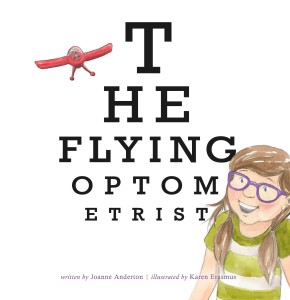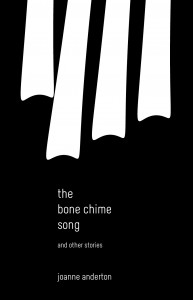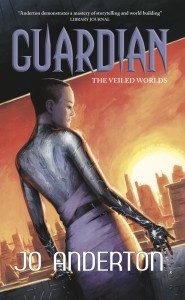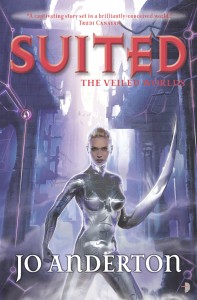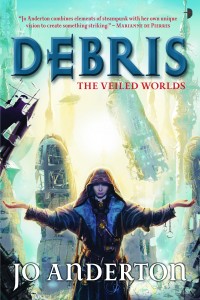Continued from part 1 – So where DO you get your ideas from?
Turning ideas into worlds
Thinking in worlds
I think in worlds. This means I am incredibly jealous of writers who think in character, plot, or theme, because I never start out with any of those. My ideas, they’re all worlds.
Despite my jealousy, I’m not actually upset about it, because damn, I love those worlds. Now, by worlds I don’t mean geography. I don’t even mean species, societies, politics and religion. All these things are vitally important, but all these things will happen next. When I say I think in worlds, I mean I think in the *spark* that makes these worlds different from ours.
That *spark* is the idea. Here are a few examples from The Bone Chime Song and Other Stories:
- The giant mcMansion being built two doors up becomes a world where high-density housing roams the streets, consuming older buildings
- A Goya etching of witches stealing teeth from dead men becomes self-aware machines on a derelict starship hunting humans for their body parts
- At the end of a yoga class, when I should have been meditating, I was distracted by the sound of a wind chime. That lead to a world where wind chimes could summon spirits
- A friend’s holiday to Thailand and description of the ‘Vegetarian Festival’ became a post-apocalyptic world, buried in ruined tech, relying on sacrifice to survive
I can’t tell you why that mcMansion wanted to become a world of its own. Possibly because damn those builders start really early and lack of sleep might have had something to do with it? The point is, I was ready to listen when it did, and quickly wrote it down. So I could turn it into a world.
The world and the idea are one
One cannot exist without the other, and everything that happens in this world MUST be informed by the idea. Even if that’s going on in the background, and even if no one else will ever know about it but you. That’s how you make a world absolute, and complete. It’s not enough to have a cool world based on a cool idea and plonk any old society and/or political system on top of it as assume ‘oh that’ll do.’ The people, the geography, everything must grow out of or at least be consistent with the idea.
If wind chimes can summon spirits, then what effect would that have on the way the rest of the world functions? Is it normal, or unusual? Can everyone do it, or just a few? What about the spirits themselves, is it just wind chimes that summon them, or are they a part of a larger picture of spirit summoning? What effect does this have on the people who live there? How does it influence their day to day lives, their politics, their technology?
And ultimately, what part does it play in the story?
Tools for growing worlds
What do we use to grow these worlds?
It’s notebooks all the way for me baby. My ideas grow into worlds in a fertiliser of increasingly illegible handwriting, scribbles that are supposed to be drawings, and lots of dot points. It’s old school, and absolutely none of it happens on a computer screen.
That’s how my world-growing brain works, but it doesn’t have to be that way. You need to find what works for you, and that can take a lot of experimenting. Scrivener is a great tool if you’re happy working electronically. I know other folks who use a whiteboard to develop their ideas, or cards pinned on a note board, or just a word doc.
It doesn’t matter what you use, as long as you give yourself the freedom to play with the idea and nurture it into a world. Nothing at this stage is set in stone, but that also means that any of it can be thrown out. You need a tool that gives you permission to go a little crazy, at least at first.
The nitty gritty
That’s great, we got our idea and we got our tools, so how do we actually do this? Step by step, how do you grow a world?
I’m going to introduce you to your two new best friends — ‘what if?’ and ‘so what?’ ‘What if’ is full of promise and creativity and mad ideas. ‘So what’ makes you justify the ‘what if’.
Step 1) To grow a world, liberally apply ‘what if’ to your idea
Step 2) Attack your ‘what if’ with the ‘so what’ knife, and discard any leftovers
Step 3) Repeat
This is a concept best described through example. So let’s talk about the Phuket vegetarian festival.
In Phuket they have this amazing festival where they offer prayers to the nine gods by performing self-mutilation like fire walking, piercing their cheeks and other body parts with, well, pretty much everything. Blades, guns, wheels, shovels, you name it. The people who do this are called ‘Mah Song’ (translates into horses of the gods) and they’re essentially spirit mediums. It’s all about thanking the gods for good health.
Fascinating, isn’t it? So, when a friend told me how she went to this vegetarian festival expecting, you know, vegetables but found this instead, I knew this was an *idea*.
What ifs started happening immediately. And that means you gotta bring the so what’s out to play.
What if the festival was happening in a post-apocalyptic future?
— so what? Why is this a future world, what’s it adding, or are you just doing it for funs?
Well, if it’s a future world then mutilation could become modification, couldn’t it? Trans-humanism, cyborgs, that kinda thing–
— so what?
Well, it’s an offering to the gods, right, and in a future world those gods could be technological, and linked to the post-apocalyptic state of things–
— so what?
You see what I mean.
Growing worlds is a fun process, but it has rules. The main rule is that everything must pass the ‘so what?’ test. You can shove anything you like into your shiny new world, but if you don’t have a reason it, then it doesn’t make the cut. Doesn’t matter how cool it is, doesn’t matter how much fun you will have lavishly describing it. If it doesn’t play a part in the world building or serve the story, then it’s just taking up valuable space.
Continued in part 3 — Turning Worlds into Stories



